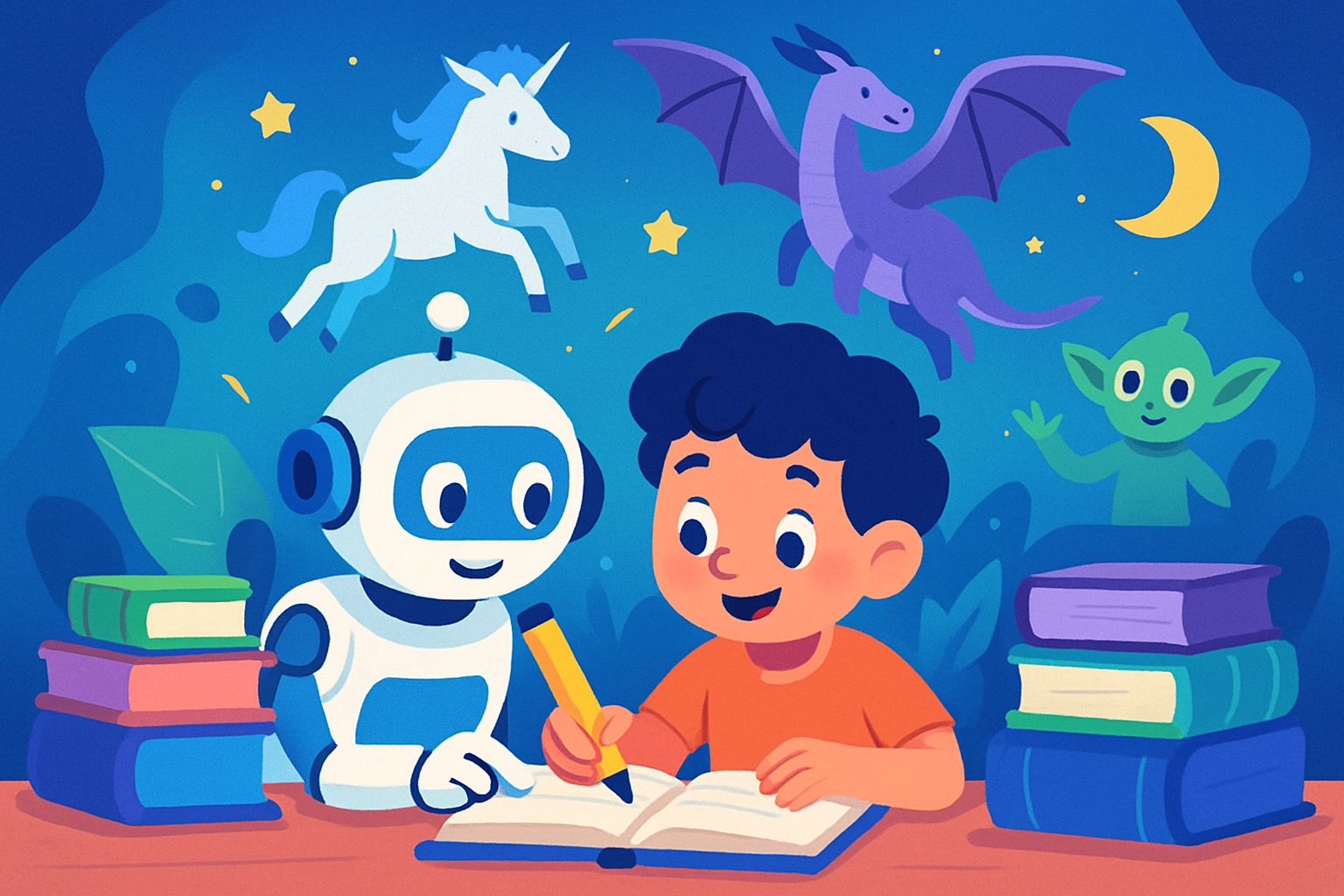AI Storyteller: Crafting Magical Children's Stories with AI
Discover how AI can help you write captivating children's stories! This beginner's guide covers everything from brainstorming to illustration.

Unleash Your Inner Author: AI for Children's Storytelling
Want to write a captivating children's story but feeling stuck? Artificial intelligence (AI) can be your creative partner! This guide walks you through using AI to brainstorm, write, and even illustrate your very own children's book.
Step 1: Brainstorming Ideas with AI
Every great story starts with an idea. Use AI tools like ChatGPT, Claude, or Gemini to generate concepts. Try prompts like:
- "Suggest 5 story ideas for children aged 5-7 about friendship."
- "Brainstorm magical creatures that could be the main character of a children's book."
- "What are some engaging themes for a children's story about overcoming fear?"
Refine the AI's suggestions until you have a concept you love.
Step 2: Developing Characters and Plot
Once you have a basic idea, ask the AI to help you develop your characters and plot. For example:
- "Describe a brave and curious squirrel character for a children's story."
- "Outline a plot for a story about a friendly dragon who learns to control his fire."
- "What are some possible conflicts and resolutions for a story about two best friends who have a disagreement?"
Use the AI's output as a starting point, and then add your own creative flair to make the characters and plot unique.
Step 3: Writing the Story with AI Assistance
Now it's time to start writing! You can use AI to generate different parts of your story. Start with a prompt like:
- "Write the first paragraph of a children's story about a little girl who discovers a hidden garden."
- "Compose a dialogue between two animal friends who are lost in the woods."
Remember, the AI is a tool to assist you, not replace you. Edit and rewrite the AI-generated text to match your style and vision. Pay attention to sentence structure, vocabulary, and the overall tone of the story. Consider using simpler language for younger audiences.
Step 4: Polishing and Editing
Once you have a complete draft, it's crucial to polish and edit your story. Read it aloud to check for flow and clarity. You can also use AI-powered grammar and spell checkers to catch any errors. Ask friends or family to read your story and provide feedback.
Step 5: Automating Your Workflow (Optional)
Want to streamline your storytelling process? Automation platforms like Make.com can help! You can create automated workflows that connect your AI tools with other apps you use, such as:
- Automatically saving AI-generated text to a Google Doc.
- Sending your story draft to an editor via email.
- Creating social media posts to promote your story.
With Make.com, you can design custom workflows that save you time and effort, allowing you to focus on what matters most: crafting amazing stories.
Step 6: Illustrating Your Story (AI-Powered or Traditional)
Illustrations bring your story to life! You have several options:
- AI Image Generators: Use tools like DALL-E, Midjourney, or Stable Diffusion to create illustrations based on your story's scenes and characters. Describe the scene in detail, including the characters, setting, and mood.
- Hire an Illustrator: If you want professional-quality illustrations, consider hiring a freelance illustrator.
- DIY: If you're artistic, you can create your own illustrations using traditional or digital art techniques.
Key Considerations for Children's Stories
Keep these points in mind when writing for children:
- Age Appropriateness: Tailor the language, themes, and complexity of the story to the target age group.
- Positive Messages: Children's stories often convey important life lessons and values.
- Engaging Characters: Create relatable and memorable characters that children will love.
- Clear Structure: A well-defined beginning, middle, and end will help children follow the story.
Beyond the Basics: Exploring Advanced Techniques
As you become more comfortable, explore more advanced AI techniques:
- Character Voice Cloning: Some AI tools allow you to create a unique voice for each character.
- Interactive Storytelling: Use AI to create stories where the reader can make choices that affect the plot.
- Personalized Stories: Tailor stories to individual children based on their interests and preferences.
Embrace the AI Storytelling Revolution
AI is a powerful tool that can help you unlock your creative potential and write amazing children's stories. Don't be afraid to experiment, have fun, and let your imagination soar! With a little AI assistance, you can create stories that will delight and inspire young readers for years to come.
Frequently Asked Questions
What is a good prompt to start with when using AI to write a children's story?
A good starting prompt is: "Suggest 5 story ideas for children aged [age range] about [theme, e.g., friendship, bravery, kindness]." This helps generate initial concepts.
How can a beginner use AI image generators for their children's story?
Start by describing the scene you want to illustrate in detail. Include the characters, setting, and mood. Use keywords that match the style you're looking for (e.g., "cute cartoon," "watercolor painting").
Is using AI to write a children's story difficult for someone new to AI?
No, it's not difficult! AI tools are designed to be user-friendly. Start with simple prompts and gradually explore more advanced features. Remember to edit and refine the AI's output to make it your own.
Why should I use an automation platform like Make.com for writing stories?
Automation platforms help you streamline your creative process by connecting different apps. You can automate tasks like saving drafts, sending emails for reviews, and posting on social media, saving you valuable time.
Affiliate Disclosure: Some of the links on this site are affiliate links. I earn a small commission if you make a purchase through them—at no extra cost to you. Thank you for your support!